Ex Vivo Expanded Donor Alloreactive Regulatory T Cells Lose Immunoregulatory, Proliferation, and Antiapoptotic Markers After Infusion Into ATG-lymphodepleted, Nonhuman Primate Heart Allograft Recipients
- PMID: 33587433
- PMCID: PMC8239063
- DOI: 10.1097/TP.0000000000003617
Ex Vivo Expanded Donor Alloreactive Regulatory T Cells Lose Immunoregulatory, Proliferation, and Antiapoptotic Markers After Infusion Into ATG-lymphodepleted, Nonhuman Primate Heart Allograft Recipients
Abstract
Background: Regulatory T cell (Treg) therapy is a promising approach to amelioration of allograft rejection and promotion of organ transplant tolerance. However, the fate of infused Treg, and how this relates to their therapeutic efficacy using different immunosuppressive regimens is poorly understood. Our aim was to analyze the tissue distribution, persistence, replicative activity and phenotypic stability of autologous, donor antigen alloreactive Treg (darTreg) in anti-thymocyte globulin (ATG)-lymphodepleted, heart-allografted cynomolgus monkeys.
Methods: darTreg were expanded ex vivo from flow-sorted, circulating Treg using activated donor B cells and infused posttransplant into recipients of major histocompatibility complex-mismatched heart allografts. Fluorochrome-labeled darTreg were identified and characterized in peripheral blood, lymphoid, and nonlymphoid tissues and the graft by flow cytometric analysis.
Results: darTreg selectively suppressed autologous T cell responses to donor antigens in vitro. However, following their adoptive transfer after transplantation, graft survival was not prolonged. Early (within 2 wk posttransplant; under ATG, tacrolimus, and anti-IL-6R) or delayed (6-8 wk posttransplant; under rapamycin) darTreg infusion resulted in a rapid decline in transferred darTreg in peripheral blood. Following their early or delayed infusion, labeled cells were evident in lymphoid and nonlymphoid organs and the graft at low percentages (<4% CD4+ T cells). Notably, infused darTreg showed reduced expression of immunoregulatory molecules (Foxp3 and CTLA4), Helios, the proliferative marker Ki67 and antiapoptotic Bcl2, compared with preinfusion darTreg and endogenous CD4+CD25hi Treg.
Conclusions: Lack of therapeutic efficacy of infused darTreg in lymphodepleted heart graft recipients appears to reflect loss of a regulatory signature and proliferative and survival capacity shortly after infusion.
Copyright © 2021 Wolters Kluwer Health, Inc. All rights reserved.
Conflict of interest statement
The authors declare no funding or conflicts of interest.
Figures
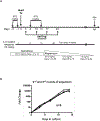




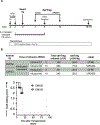


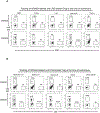

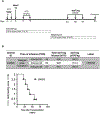


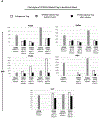

Similar articles
-
Regulatory T Cell Infusion Can Enhance Memory T Cell and Alloantibody Responses in Lymphodepleted Nonhuman Primate Heart Allograft Recipients.Am J Transplant. 2016 Jul;16(7):1999-2015. doi: 10.1111/ajt.13685. Epub 2016 Mar 17. Am J Transplant. 2016. PMID: 26700196 Free PMC article.
-
Adoptive transfer of CD4+CD25+ regulatory cells combined with low-dose sirolimus and anti-thymocyte globulin delays acute rejection of renal allografts in Cynomolgus monkeys.Int Immunopharmacol. 2011 May;11(5):618-29. doi: 10.1016/j.intimp.2010.11.001. Epub 2010 Nov 20. Int Immunopharmacol. 2011. PMID: 21094689
-
Effect of Ex Vivo-Expanded Recipient Regulatory T Cells on Hematopoietic Chimerism and Kidney Allograft Tolerance Across MHC Barriers in Cynomolgus Macaques.Transplantation. 2017 Feb;101(2):274-283. doi: 10.1097/TP.0000000000001559. Transplantation. 2017. PMID: 27846155 Free PMC article.
-
Donor reactive regulatory T cells.Curr Opin Organ Transplant. 2009 Aug;14(4):432-8. doi: 10.1097/MOT.0b013e32832c58f1. Curr Opin Organ Transplant. 2009. PMID: 19448539 Review.
-
Adoptive regulatory T cell therapy: challenges in clinical transplantation.Curr Opin Organ Transplant. 2010 Aug;15(4):427-34. doi: 10.1097/MOT.0b013e32833bfadc. Curr Opin Organ Transplant. 2010. PMID: 20616725 Review.
Cited by
-
Tregs in transplantation tolerance: role and therapeutic potential.Front Transplant. 2023 Aug 30;2:1217065. doi: 10.3389/frtra.2023.1217065. eCollection 2023. Front Transplant. 2023. PMID: 38993904 Free PMC article. Review.
-
Current status of xenotransplantation from an immunobiological standpoint.Clin Transplant Res. 2025 Jun 30;39(2):97-115. doi: 10.4285/ctr.24.0065. Epub 2025 Mar 19. Clin Transplant Res. 2025. PMID: 40103389 Free PMC article. Review.
-
Immune Subsets From Ficoll Density Gradient Separation in Kidney Transplant Recipients.Transplant Direct. 2022 Apr 15;8(5):e1319. doi: 10.1097/TXD.0000000000001319. eCollection 2022 May. Transplant Direct. 2022. PMID: 35464877 Free PMC article. No abstract available.
-
Treg Therapy for the Induction of Immune Tolerance in Transplantation-Not Lost in Translation?Int J Mol Sci. 2023 Jan 16;24(2):1752. doi: 10.3390/ijms24021752. Int J Mol Sci. 2023. PMID: 36675265 Free PMC article. Review.
-
Non-human Primate Regulatory T Cells and Their Assessment as Cellular Therapeutics in Preclinical Transplantation Models.Front Cell Dev Biol. 2021 Jun 15;9:666959. doi: 10.3389/fcell.2021.666959. eCollection 2021. Front Cell Dev Biol. 2021. PMID: 34211972 Free PMC article. Review.
References
-
- Sicard A, Boardman DA, Levings MK. Taking regulatory T-cell therapy one step further. Curr Opin Organ Transplant 2018;23:509–515. - PubMed
-
- Romano M, Tung SL, Smyth LA, et al.Treg therapy in transplantation: a general overview. Transpl Int 2017;30:745–753. - PubMed
-
- Wood KJ, Bushell A, Hester J. Regulatory immune cells in transplantation. Nat Rev Immunol 2012;12:417–430. - PubMed
-
- Kang SM, Tang Q, Bluestone JA. CD4+CD25+ regulatory T cells in transplantation: progress, challenges and prospects. Am J Transplant 2007;7:1457–1463. - PubMed
Publication types
MeSH terms
Substances
Grants and funding
LinkOut - more resources
Full Text Sources
Other Literature Sources
Medical
Research Materials

